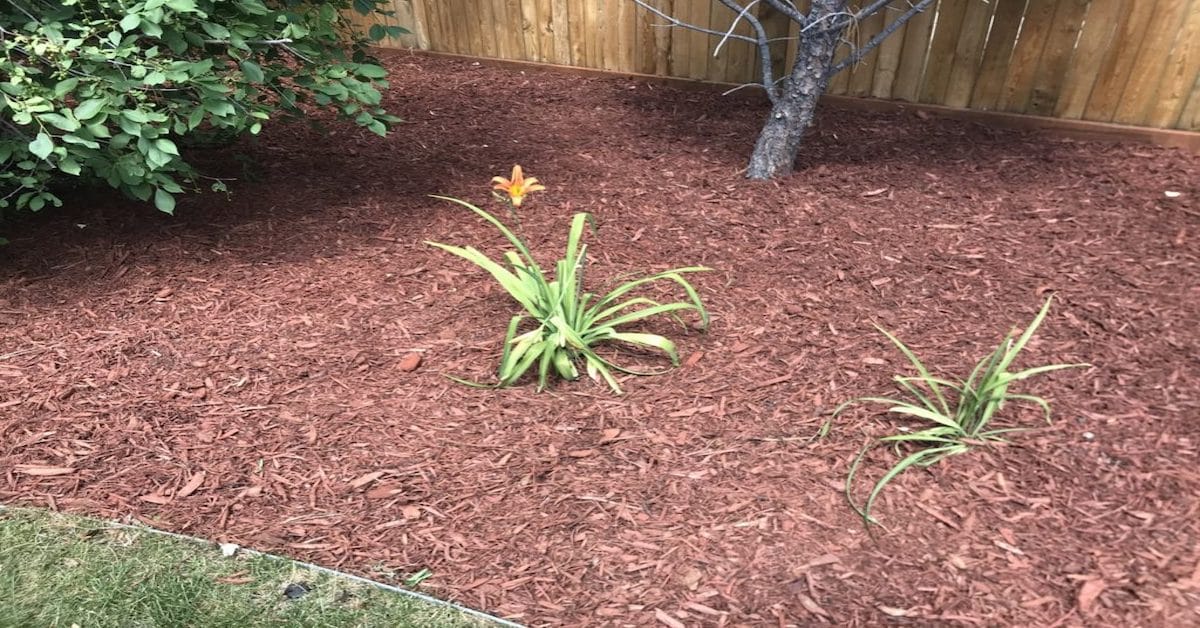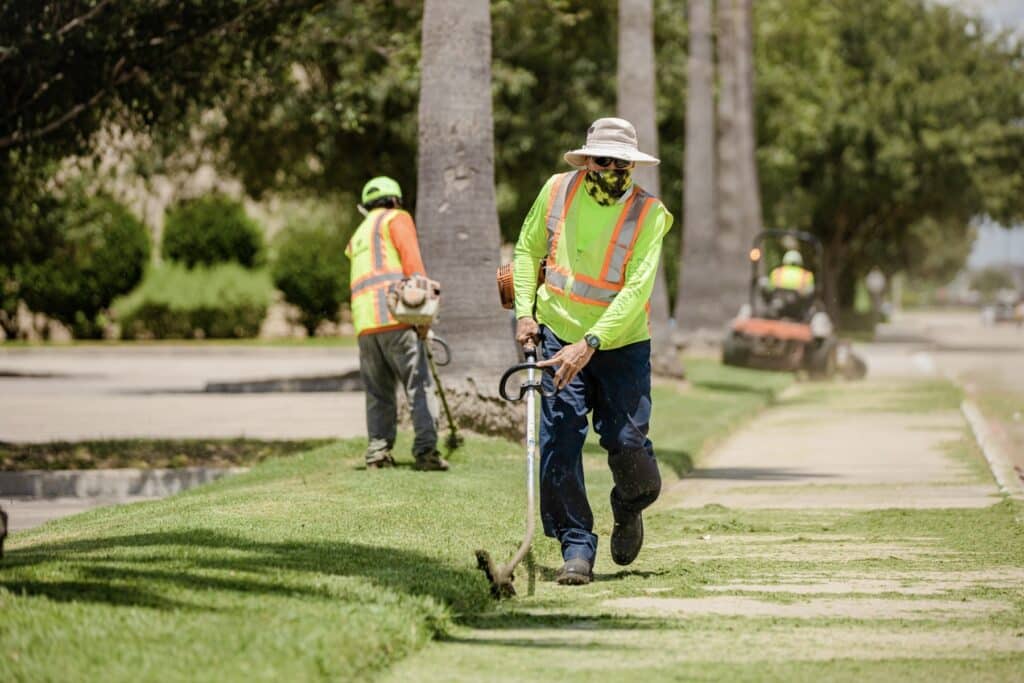Home>Gardening Tips and Tricks>Problem Solving>How To Dispose Of Landscaping Bricks


Problem Solving
How To Dispose Of Landscaping Bricks
Modified: January 22, 2024
Looking for a solution to dispose of landscaping bricks? Our expert guide on problem-solving will help you find the best methods for proper disposal.
(Many of the links in this article redirect to a specific reviewed product. Your purchase of these products through affiliate links helps to generate commission for Chicagolandgardening.com, at no extra cost. Learn more)
Table of Contents
Introduction
Landscaping bricks are a popular choice for adding aesthetic appeal to outdoor spaces. However, there may come a time when you need to dispose of these bricks due to renovations, reconfigurations, or simply because they are no longer in good condition. Properly disposing of landscaping bricks is essential for both environmental responsibility and maintaining the cleanliness of your property.
But what are your options when it comes to disposing of landscaping bricks? Fortunately, there are several approaches you can take, depending on the condition of the bricks and your specific needs. In this article, we will guide you through six steps for effectively managing your landscaping bricks, including assessing their condition, cleaning them, reusing them in your landscape, selling or donating them, recycling them, or properly disposing of bricks that can no longer be used.
By following these steps, you can ensure that your unwanted landscaping bricks are dealt with in an eco-friendly and responsible manner. Let’s dive into the details!
Step 1: Assessing the Condition of Landscaping Bricks
The first step in properly disposing of landscaping bricks is to assess their condition. Take a close look at each brick to determine if it is still usable or if it is beyond repair. Look for cracks, chips, or any other damage that may affect the structural integrity of the brick.
If you find that some of the bricks are still in good condition, consider whether you can incorporate them into other landscaping projects on your property. Reusing the bricks not only helps you save money but also reduces waste and promotes sustainability. You can repurpose them as garden borders, stepping stones, or even create a new patio or walkway.
On the other hand, if the bricks are in poor condition or cannot be salvaged, it’s time to decide whether they can be recycled or if they need to be disposed of properly. Recycling is the preferred option, as it reduces the amount of waste going into landfills and helps conserve natural resources.
Keep in mind that different recycling facilities may have different guidelines for accepting landscaping bricks. Some facilities may only accept clean bricks without mortar or other materials attached, while others may have specific requirements for brick size or type. Research local recycling centers to find out their specific guidelines and whether they accept landscaping bricks.
If there are no recycling options available in your area, you will need to explore other methods of disposal. This may involve hiring a waste management company to pick up and dispose of the bricks or renting a dumpster to collect them.
By taking the time to assess the condition of your landscaping bricks, you can determine the best course of action for disposal. Whether it is reusing, recycling, or proper disposal, you are making a conscious effort to minimize waste and contribute to a cleaner environment.
Step 2: Cleaning the Bricks
Once you have assessed the condition of your landscaping bricks and determined which ones can be reused or recycled, it’s time to clean them. Cleaning the bricks not only improves their appearance but also ensures that they are free from any debris or substances that may hinder their reuse or recycling.
Start by removing any loose dirt, moss, or weeds from the surface of the bricks. You can use a stiff brush or a pressure washer to scrub away the dirt. Pay special attention to any cracks or crevices where debris might accumulate.
If there is any hardened mortar or cement stuck to the bricks, you will need to chip it off. This can be done using a chisel or a hammer. Be careful not to damage the bricks in the process. It may require some time and effort, but removing the mortar will ensure that the bricks are clean and ready for reuse or recycling.
For stubborn stains or discoloration, you can create a cleaning solution using mild soap or detergent mixed with water. Apply the solution to the affected areas and scrub gently with a brush. Rinse the bricks thoroughly with water to remove any soap residue.
After cleaning the bricks, allow them to dry completely before deciding on their next destination. This will prevent moisture from causing further damage or mold growth during storage.
Remember, if you are planning to reuse the bricks in your landscape, it’s important to clean them thoroughly to ensure a seamless and visually appealing result. Cleaning also increases the chances of finding a buyer or donation recipient if you decide to go that route.
Cleaning your landscaping bricks may require some effort, but it is a crucial step in the disposal process. By investing the time to clean the bricks properly, you are ensuring their quality and maximizing their potential for reuse or recycling.
Step 3: Reusing the Bricks in Your Landscape
One of the most sustainable and cost-effective options for disposing of landscaping bricks is to reuse them in your own landscape. Reusing bricks not only saves money and reduces waste but also adds a unique and personalized touch to your outdoor space.
Depending on the condition of the bricks and your landscaping needs, there are various ways you can repurpose them. Here are some ideas to get you started:
- Creating garden edges: Use the bricks to outline garden beds or create borders around trees or shrubs. This not only enhances the appearance of your garden but also helps keep soil and mulch in place.
- Building pathways: Lay the bricks in a pattern to create beautiful pathways or walkways in your garden. This adds functionality and allows you to navigate your outdoor space with ease.
- Constructing a patio: If you have a larger quantity of bricks, consider building a patio or an outdoor seating area. The sturdy nature of landscaping bricks makes them an ideal material for creating a durable and inviting outdoor living space.
- Designing raised flower beds: Stack the bricks to create raised flower beds or planter boxes. This not only provides a designated space for your plants but also adds dimension and visual interest to your garden.
- Building decorative structures: Get creative and use the bricks to build unique structures such as a garden bench, a fire pit, or a decorative wall. These structures can become the focal points of your landscape and showcase your personal style.
When reusing landscaping bricks, take the time to plan the layout and design to ensure that they seamlessly blend into your existing landscape. Consider factors such as color, size, and pattern to create a cohesive and visually appealing result.
By reusing your landscaping bricks, you are not only giving them a new purpose but also adding value and character to your outdoor space. It’s a win-win situation that benefits both the environment and your landscape aesthetics.
Step 4: Selling or Donating the Bricks
If you have landscaping bricks that are in good condition but are unable to reuse them in your own landscape, consider selling or donating them. This allows others to benefit from your unwanted bricks while reducing waste and promoting sustainability.
To sell the bricks, you can start by advertising them online through platforms such as classified websites, social media marketplaces, or even local community groups. Include details about the quantity, condition, and any specific features of the bricks. Be sure to take clear photos that showcase the bricks’ quality. Price them appropriately, taking into consideration factors such as the original cost, condition, and demand in your area.
Alternatively, you can donate the bricks to organizations, community projects, or individuals who may be in need of landscaping materials. Local schools, community gardens, or nonprofits that focus on sustainable building projects could be potential recipients. Reach out to these organizations to inquire about their needs and whether they accept brick donations.
Donating the bricks not only keeps them out of landfills but also benefits those who may not have the resources to purchase new materials. It’s a charitable and socially responsible way to dispose of your unwanted landscaping bricks.
When selling or donating the bricks, ensure that you provide accurate and honest information about their condition. This helps potential buyers or recipients make informed decisions. Additionally, arrange for the appropriate transport or delivery of the bricks, taking into consideration the weight and quantity.
By selling or donating your landscaping bricks, you are giving them a new life while contributing to a more sustainable community. It’s a great way to make a positive impact and connect with others who share your passion for reusing materials.
Step 5: Recycling the Bricks
Recycling your landscaping bricks is an environmentally responsible option that helps reduce the amount of waste going into landfills and conserves natural resources. Although not all recycling facilities may accept landscaping bricks, it’s worth exploring local options to ensure they are properly recycled.
Start by researching recycling centers or facilities in your area that accept bricks. Some facilities may have specific guidelines for accepting landscaping bricks, such as requiring them to be clean and free from mortar or other materials. Contact the recycling centers to confirm their acceptance criteria and if there are any fees associated with dropping off the bricks.
If there are no local recycling options available, consider reaching out to nearby construction companies or contractors. They may have resources or connections in the construction and recycling industry that can help you find a suitable recycling solution for your landscaping bricks.
When preparing the bricks for recycling, remove any attached materials like mortar, paint, or adhesive. If the bricks are heavily contaminated or have other materials mixed in, it may limit their recycling potential. Sorting the bricks by type and size can also make the recycling process more efficient.
Recycling facilities may process the bricks in different ways. Some may crush them into aggregate material for use in construction projects, while others may repurpose them for landscaping or hardscaping applications. Regardless of the specific process, recycling ensures that the bricks are given a new life and contribute to the circular economy.
By recycling your landscaping bricks, you are actively participating in a sustainable solution that helps conserve natural resources and reduces the strain on landfills. It’s a responsible choice that supports the ongoing efforts to build a greener and more eco-friendly future.
Step 6: Properly Disposing of Unusable Bricks
In some cases, you may find that some of your landscaping bricks are beyond repair or reuse and cannot be recycled. When faced with this situation, it’s important to follow proper procedures for disposing of the bricks to ensure minimal impact on the environment.
One option for disposing of unusable bricks is to hire a waste management company that offers brick disposal services. These companies specialize in handling and disposing of construction and landscaping materials. They will collect the bricks from your location and ensure they are properly disposed of in accordance with local regulations.
If you have a larger quantity of bricks, renting a dumpster may be a more cost-effective solution. Look for dumpsters specifically designed for construction debris and follow the guidelines provided by the rental company for proper brick disposal. Keep in mind that there may be restrictions on the type and quantity of materials you can dispose of in the dumpster, so clarify these details beforehand.
Another option is to check with your local landfill or transfer station to see if they accept bricks. Some facilities have specific areas designated for construction and demolition waste. If you choose this option, be prepared to pay any applicable fees for disposal.
When disposing of the bricks, it’s important to handle them safely and responsibly. Wear appropriate protective gear, such as gloves and safety glasses, to avoid injury. If the bricks are heavy, use proper lifting techniques or enlist the help of others to prevent strain or accidents.
Remember, proper disposal of unusable bricks ensures that they don’t end up in unauthorized dumping sites or contribute to environmental pollution. By adhering to established disposal methods, you are exhibiting good stewardship and helping to maintain a clean and healthy environment.
Conclusion
Properly disposing of landscaping bricks is essential for both environmental responsibility and maintaining the cleanliness of your property. By following the six steps outlined in this article – assessing the condition of the bricks, cleaning them, reusing them in your landscape, selling or donating them, recycling them, or properly disposing of unusable bricks – you can ensure that your unwanted bricks are effectively managed.
Assessing the condition of the bricks allows you to determine if they can be reused or recycled. Cleaning the bricks not only improves their appearance but also ensures they are free from debris or substances that may hinder their reuse or recycling. Reusing the bricks in your own landscape is a sustainable and cost-effective option that adds a unique touch to your outdoor space.
If you are unable to reuse the bricks, consider selling or donating them to others who may benefit from them. Selling the bricks allows you to recoup some of your investment while donating them helps those in need and reduces waste. Recycling the bricks is an environmentally responsible option that helps conserve resources and reduces landfill waste.
Finally, if you have unusable bricks that cannot be recycled, proper disposal methods such as hiring a waste management company or renting a dumpster should be followed. This helps prevent unauthorized dumping and minimizes the impact on the environment.
By following these steps, you are making a positive impact on the environment, promoting sustainability, and contributing to a cleaner and greener world. Take the time to assess, clean, reuse, sell, donate, recycle, or dispose of your landscaping bricks responsibly, and you will be actively participating in the efforts to create a more sustainable future.









